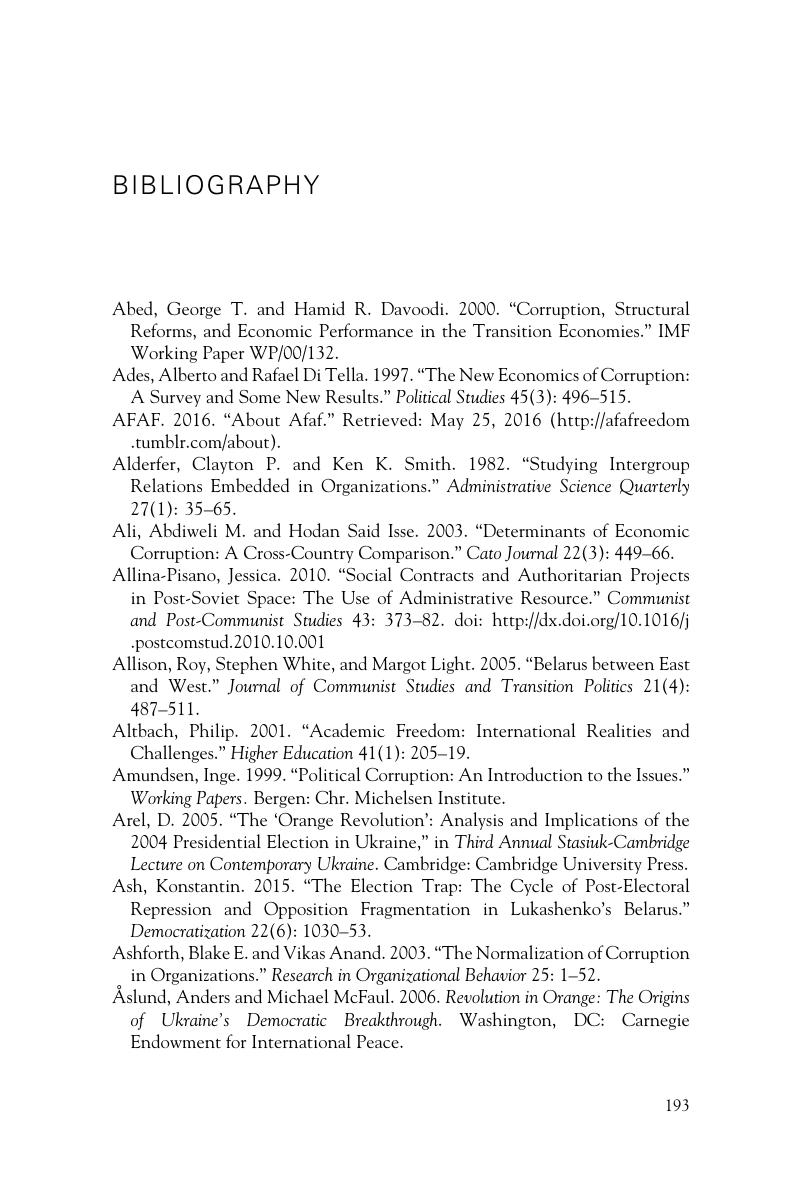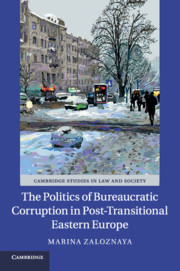Book contents
- The Politics of Bureaucratic Corruption in Post-Transitional Eastern Europe
- Cambridge Studies in Law and Society
- The Politics of Bureaucratic Corruption in Post-Transitional Eastern Europe
- Copyright page
- Dedication
- Contents
- Tables
- Acknowledgments
- Introduction
- Chapter One Beyond Transition: Political Turnover and Bureaucratic Corruption in Hybrid Regimes
- Chapter Two The Secret Life of Universities in Post-Soviet Ukraine
- Chapter Three Fear and Transparency in the Universities of Post-Soviet Belarus
- Chapter Four High Political Turnover and Cross-Organizational Variation in Corruption in Post-Soviet Ukraine
- Chapter Five Low Political Turnover and Cross-Sectoral Variation in Corruption in Post-Soviet Belarus
- Conclusion
- Book part
- Bibliography
- Index
- Cambridge Studies in Law and Society
- References
Bibliography
Published online by Cambridge University Press: 01 June 2017
- The Politics of Bureaucratic Corruption in Post-Transitional Eastern Europe
- Cambridge Studies in Law and Society
- The Politics of Bureaucratic Corruption in Post-Transitional Eastern Europe
- Copyright page
- Dedication
- Contents
- Tables
- Acknowledgments
- Introduction
- Chapter One Beyond Transition: Political Turnover and Bureaucratic Corruption in Hybrid Regimes
- Chapter Two The Secret Life of Universities in Post-Soviet Ukraine
- Chapter Three Fear and Transparency in the Universities of Post-Soviet Belarus
- Chapter Four High Political Turnover and Cross-Organizational Variation in Corruption in Post-Soviet Ukraine
- Chapter Five Low Political Turnover and Cross-Sectoral Variation in Corruption in Post-Soviet Belarus
- Conclusion
- Book part
- Bibliography
- Index
- Cambridge Studies in Law and Society
- References
Summary

- Type
- Chapter
- Information
- Publisher: Cambridge University PressPrint publication year: 2017



